
[Back]

[Index]

[Next]
 [Back] |
 [Index] |
 [Next] |
SECTION 3 - OPERATIONS
3.1 GENERAL Endurance UAVs will be deployed worldwide to support joint combatant forces in worldwide peace, crisis, and wartime operations such as: Battlespace dominance (wartime); Regional crisis, limited deployment operations; and Operations Other Than War. The high mobility of these vehicles and their accompanying ground-based system components will allow flexibility in selection of operating locations and employment. This capability will enhance the system�s utility, survivability, and readiness. Specific beddown decisions will be made by theater commanders within their current infrastructures.
3.2 ORGANIZATION Predator UAVs will be aligned under Air Combat Command�s Air Warfare Center and assigned to the 57 WG at Nellis AFB with flight operations conducted from Indian Springs Auxiliary Air Field NV. Within the 57 WG endurance UAVs will be assigned to the 11 RS (see Figure 3-1). The 11 RS was activated 29 Jul 95, for the sole purpose of integrating Predator UAVs into air operations. The 11 RS will be subdivided into two flights, operations and maintenance. All squadron personnel will have a worldwide commitment to deploy in support of tactical operations or other taskings as appropriately approved.
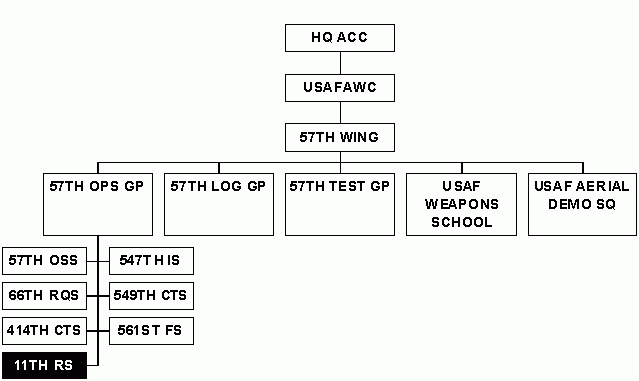
Figure 3-1: Endurance UAV Organization Chart
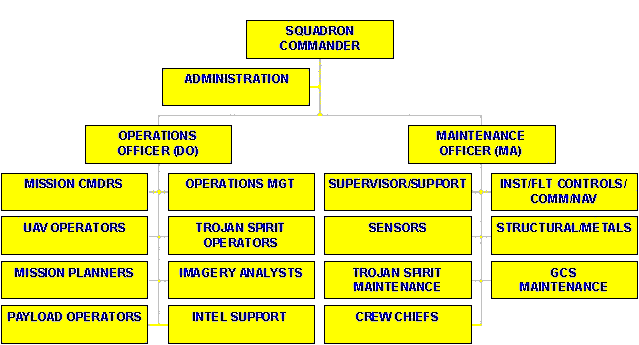
Figure 3-2: Current 11 RS with Predator UAVs
3.3 BASING Basing of endurance UAVs will follow a main operating base (MOB) - non-MOB concept. Non-MOBs may be any geographical location where US tactical forces may be committed. Non-MOBs will be established by theater planners.
3.3.1 CONUS MOB UAVs under the operational control of ACC will not operate from an active Air Force installation until certified by the ACC/DO. The MOB for the Predator endurance UAVs will be at Indian Springs Air Force Auxiliary Field. The commander of the 11 RS maintains an office at Nellis AFB. The Global Hawk and DarkStar MOBs are TBD. The 11 RS MOB will conduct initial qualification training (IQT), mission qualification training (MQT), and continuation training (CT). UAV operations from an Air Force satellite or auxiliary operating area/site/installation may be required as an interim basing option until endurance UAVs can be reliably bedded down Exercise support and operational support can be conducted from both MOB or Non-MOB locations. Minimum criteria for the MOB (Nellis AFB - Indian Springs Auxiliary Field) include:
3.3.1.1 Site with a low volume of ground and air traffic or an existing AFB with an auxiliary airfield/site (off major air routes, not near major airports or traffic patterns - minimum interaction with visual flight rule (VFR) traffic).
3.3.1.2 Site with a minimum landing strip of 5,000 feet (prepared, smooth hard surface).
3.3.1.3 Access to restricted airspace and AF-joint training areas (collocated if possible) (i.e., Ft. Irwin, Nellis and White Sands ranges, etc.). This criteria may not apply to Non-MOB employment. Currently the need to access to special use airspace is a result of the status of agreements between USAF and the FAA for UAV airspace integration. Reference Para 3.11 for details.
3.3.1.4 Access to a support base.
3.3.1.5 Facilities/or areas to site maintenance facilities to perform maintenance on UAVs.
3.3.1.6 Access to/or areas to site hanger facilities, or other facilities to provide environmental protection for UAVs.
3.3.2 Non-MOB Operating Locations Non-MOBs for the UAVs should be selected with criteria similar to that of the MOB. Maintenance capabilities may be reduced (compared to the MOB) by varying degrees depending on theater support capabilities or operational taskings. Each of the NON-MOBs will be capable of supporting projected taskings (D to D+30) with a maintenance and support package of support equipment, spares, and consumable stock, etc.
3.3.2.1 The maintenance and support packages will include highly mobile, six-day support kits for possible dispersal operations within each theater. These kits will consist of critical mission system components and other material spares, such as tires, seals, gaskets, oil, etc., to support initial orbit surge requirements until intermediate level maintenance (ILM) packages arrive. The selection of spares, other components, and consumables for these kits will be compatible with a limited maintenance capability to remove, replace, and perform limited repair using predetermined/pre-positioned SE. Kits for each potential dispersal location will be air transportable in one aircraft no larger than the standard theater distribution system type aircraft.
3.3.2.2 During periods of hostility, aircraft may be deployed or dispersed from the MOB, or Non-MOB, to support projected taskings or to improve survivability. The mobile support kits will also be deployed from the Non-MOBs to support basing requirements. Fuels and other consumables not part of the mobile support kits, or aviation and immediate level maintenance organizations, will be deployed to Non-MOB as determined by other planning documents. It should be noted, however, that deployment or dispersal of aircraft from the Non-MOBs may result in decreased orbit coverage/mission effectiveness for Predator and DarkStar.
3.4 DEPLOYMENT/REDEPLOYMENT
3.4.1 Deployment basing of these UAV systems will be the prerogative of the supported theater CINC/JTF Commander, in coordination with the supporting operating command, USACOM/ACC.
3.4.1.1 Predator The Predator�s500 NM operational radius will need to be considered when choosing an operating location. The basic deployable MAE UAV system (4 two air vehicles , GCS, TSII, support equipment, and Personnel) are transportable in C-130 and C-141 aircraft (this is exclusive of the TROJAN SPIRIT II van). GCS trailers are not configured for air mobility and require special handling to load and unload from transport aircraft.
3.4.1.2 Global Hawk The Global Hawk�s 3000 NM operational radius offers commanders the JFACC considerable flexibility in choosing an operating location. For example, bases may be used outside the immediate theater of interest, freeing up ramp space for strike aircraft. The Global Hawk capability will be transportable to any theater of operations by airlifting moving the ground and support segments and self. The ground and support segments will require three C-141 equivalent loads to provide one single continuous orbit.
3.4.1.3 DarkStar The DarkStar 500 NM operational radius will need to be considered when choosing an operating location. DarkStar air vehicles and payloads may require transport to the theater of operations dependent on the range from garrison to the Non-MOB UAV operating location base.
3.4.2 Deployment Options and Requirements The Endurance UAV systems are readily deployable, with pack-up for transport in 24 to 48 hours, and set-up/commencement of operations also taking 24 to 48 hours after arrival at the operating site. A fully deployed system will be able to sustain continuous operations for thirty days without re-supply. Maintenance and logistics personnel will maintain the critical ground spares and line replaceable units (LRUs) as well as provide the necessary power generation and environmental control equipment required by the ground station components. Depending on the specifics of the theater environment, operational and logistical considerations, a number of deployment options exist that could include a mix of all three classes of UAV capabilities. Due to operational radius of action, Predator and DarkStar missions will normally be flown from Non-MOB deployed sites. Predator will always deploy as a system as defined in Section 2 of this CONOPS. Even though Global Hawk and DarkStar are capable of sharing ground-based system components (MCE, LRE, and PLRE), the different operational characteristics and the technical limitations of the DarkStar will most likely demand independently deployed capabilities. Figures 3-4, 3-5, and 3-6 illustrate notional mission profiles for the Predator, Global Hawk, and DarkStar, respectfully.
3.4.3 Forward Deployment Option and Requirements A fully deployable Predator UAV system will require four air vehicles, a GCS, support equipment, a Trojan Spirit II van, and 65 personnel. A complete Predator system will require four C-130s or two C-141s for deployment. This deployment option provides resources to support one near continuous Predator orbit (gaps in orbit coverage are due to the baseline system limitation of the GCS only being able to control one vehicle at a time)..MAE UAV orbit. A fully deployable HAE UAV weapon system is envisioned to include a compliment of Global Hawk or DarkStar, or both air vehicles, a MCE, LRE, PLRE, a SE kit (capable of supporting operations for 30 days), and personnel. The HAE UAV ground elements are designed to be readily deployable in three C-141 equivalent loads. The Global Hawk air vehicle is self deployable. The DarkStar air vehicle will most likely require air transport by C-17, C-141, or C-5 aircraft depending on Non-MOB locationsC-130 or larger aircraft. The requesting agency will be required to provide support unique to the operating area and environment if it is not already provided as part of the HAE UAV deployment packages.
3.5 EMPLOYMENT
3.5.1 Predator Employment The Predator system will always deploy as a complete system and all of the system components will be collocated at the Predator vehicle�s launch and recovery base. The current baseline system constraints require that Predator vehicles not operate within close proximity to one another. As a result, it is not likely that more than one system will be operated from a single base.
3.5.2 Global Hawk and DarkStar Employment
3.5.2.1 Collocation Deployment Option This deployment option allows the MCE, LRE, and air vehicles to be located at the same site. With all components collocated, the support requirements will be less intensive than the split-site deployment option.
3.5.2.2 Split-Site Deployment Option and Requirements Split-site deployment provides operational and/or logistical flexibility by allowing the air vehicles to operate from a site remote from the MCE. The LRE and the UAV may be forward (or rear) deployed to reduce transit time, improve on station endurance, and/or retain the MCE at a favorable site (due to security, collocation with exploitation sites, communications, logistics, etc.). If the MCE and the LRE/UAVs were both deployed to distinctly separate sites, the support requirements will be more extensive than a collocation deployment option. Support requirements may be less extensive with the Global Hawk if operations from the MOB can be accomplished. Figures 3-8 and 3-9 provide sample mission profiles for the Global Hawk and DarkStar using split-site operations. Connectivity will be described in Section 6.
3.5.2.3 MOB Option and Requirements One operational scenario includes no deployment of ground stations and equipment. The air vehicle will be employed from a main operating base (MOB) and will data link tasked sensor data to the MCE or existing exploitation sites. Required support activity may include access to the command and control architecture (SATCOM use and coordination). This option is feasible only for the Global Hawk system.
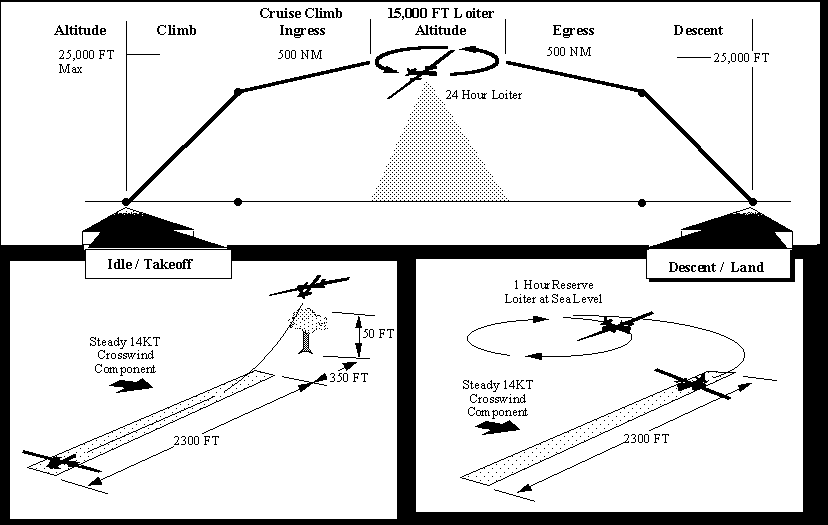
Figure 3-3: Predator (Tier II) Mission Profile
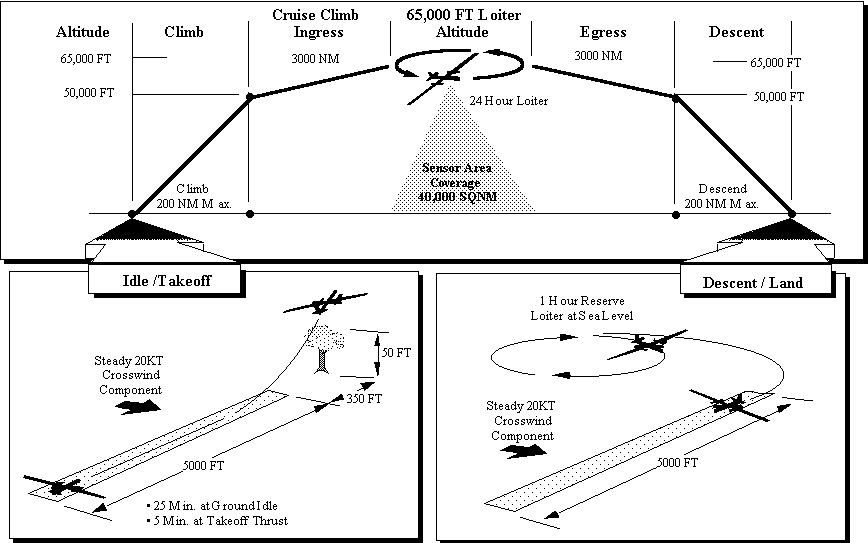
Figure 3-4: Notional Global Hawk (Tier II+) Mission Profile

Figure 3-5: Notional DarkStar (Tier III-) Mission Profile
3.5.2.4 Predator GCS Operations Both the Predator mission payload and aircraft control will be operated from it�s GCS. The Predator�s GCS is a single element composed of a group of subsystems and operator stations capable of mission planning, flight planning, launching, controlling, monitoring, preliminary sensor analysis, and recovering the vehicle. EO and IR video data will be passed via LOS or UHF/Ku-Band Satellite data link to the GCS. SAR framed imagery will require a Ku-Band Satellite link. Predator�s imagery analyst then prepares the collected data for further dissemination. Warfighting CINCs will provide an exploitation cell compatible with the specific theater comm/intel backbone and the Predator GCS. The most recent deployments of the Predator system have been augmented by a "Rapid Exploitation and Dissemination (RED) Cell." From the exploitation cell, imagery is piped through a Trojan Spirit van via commercial satellite to the desired customer (see Figure 3-7).
3.5.2.5 Global Hawk and DarkStar LRE Operations The LRE is a subset of the MCE, providing the functionality for mission planning and air vehicle command and control. The LRE contains a mission planning workstation and a command and control workstation. During split-site operations, the senior operator will function as the local mission commander until air vehicle control is passed to the MCE (see Figures 3-8 and 3-9). The primary difference between the LRE and MCE is the lack of any wide-band data links or image processing capability within the LRE, and the addition of a Differential Global Positioning System (DGPS) system at the LRE to provide the precision navigation required for ground operations, take-off, and landing. The LRE mission planning capability is fully redundant with that in the MCE, which allows the LRE to make updates to the mission plan received from the MCE prior to launch or while enroute to/from the handover point; however, the LRE lacks provisions for automated reception of threat and weather data and will require these data from the MCE. Command and control is executed over either the UHF SATCOM or LOS data links; voice coordination with airspace control authorities can be accomplished through the air vehicle relay (over UHF SATCOM only, and only through the Global Hawk) or via a dedicated ARC-210 VHF/UHF voice radio. The UHF SATCOM and LOS radios are interchangeable, providing an in-line spare for both links. Take-off and landing accuracy is obtained using DGPS; the DGPS system computes pseudo-range corrections to received GPS signals and transmits those corrections to the air vehicle, providing accuracy�s of 1.1 meter within 20 nm of the LRE. The pseudo-range corrections are transmitted over a separate VHF link for Global Hawk, and are integrated into the command and control uplink signal for DarkStar. (DarkStar does have a separate backup VHF link for DGPS corrections should the C2 link fail.) The Global Hawk DGPS is designed for Special Category One (SCAT-1) operation. Once SCAT-1 systems become available and their use widespread, Global Hawk should be able to land at any airfield with an operable system, providing readily available alternative landing sites. In the interim, the PLRE will be available for rapid deployment within theater to recover either a Global Hawk or DarkStar vehicle at an alternate recovery location.
3.5.2.6 Global Hawk and DarkStar MCE Operations The MCE is responsible for mission planning, including flight planning, communications planning, and sensor planning. Once the mission plan is completed, the MCE electronically transfers the plan to the LRE for loading into the air vehicle. After the LRE hands off the air vehicle to the MCE, the MCE is responsible for monitoring and controlling the air vehicle and payloads. It has the potential to control up to three air vehicles simultaneously, although sensor data would only be received from one air vehicle at a time. The MCE is the key control node that allows the system to provide the NRT information that battlefield commanders need. The MCE's ability to dynamically re-task the air vehicle in flight, as well as change the sensors� area of interest, supports this feature. The MCE will be capable of passing "quick look" voice or tactical reports as necessary. The MCE receives data from the UAV via wide-band LOS or via commercial satellite, then processes the data and sends it to existing exploitation centers. Greater onboard processing capability will allow the data to be data linked directly to a theater processing site (Global Hawk only), the desired method. The MCE can store the image data for up to 24 hours, and can send selected stored data to a tactical requester (see Figures 3-8, and 3-9).

Figure 3-6: Notional Predator Mission Concept
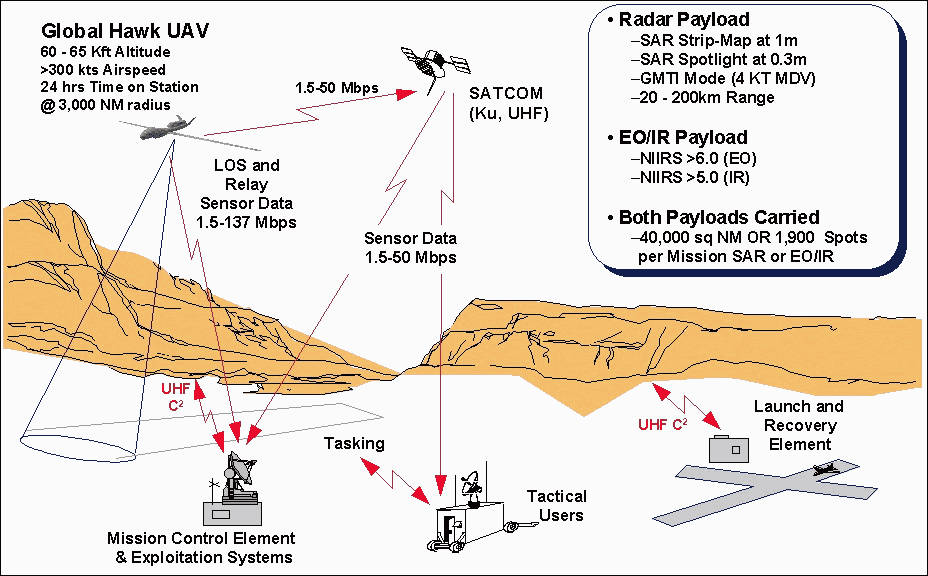
Figure 3-7: Notional Global Hawk Split-Site Concept
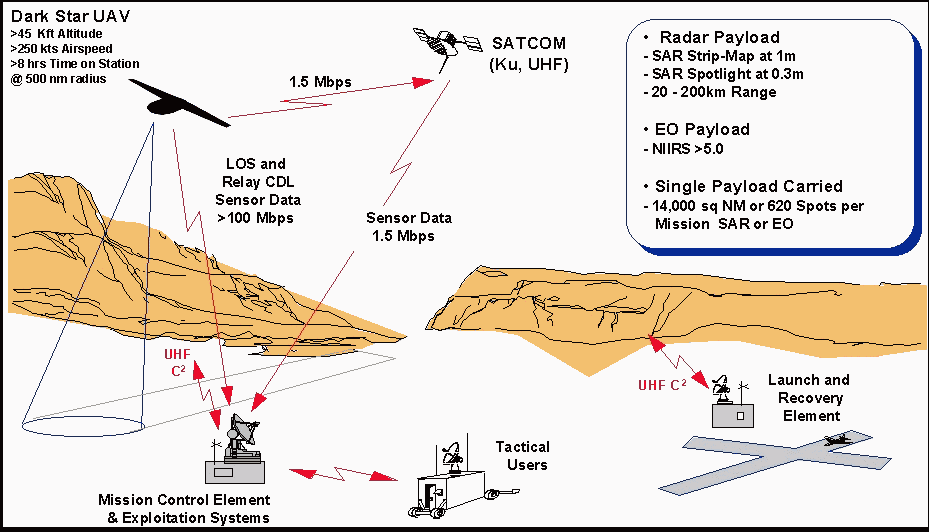
Figure 3-8: Notional DarkStar Split-Site Concept
3.6 THEATER AIR COMPONENT RESPONSIBILITIES The following operational prerequisites and support services will be required from the receiving command to support UAV operations.
3.6.1 A theater concept of employment on how the theater plans to utilize UAV assets should be developed and include the following mandatory items:
3.6.1.1 Mission nickname.
3.6.1.2 Security classification and releasability.
3.6.1.3 Public affairs guidance.
3.6.1.4 General responsibilities of the air component command and subordinates.
3.6.1.5 Organizational responsibilities.
3.6.1.6 Operational reporting.
3.6.1.7 Mission track development.
3.6.1.8 Scheduling.
3.6.1.9 Execution and ATO integration.
3.6.1.10 Weather recall procedures and criteria for imagery missions.
3.6.1.11 Flight plan and theater ICAO and AWACS/ABCCC/JSTARS integration and deconfliction requirements.
3.6.1.12 Diplomatic clearance(s).
3.6.1.13 Collection area procedures to include sensor tasking/employment.
3.6.1.14 Entry, departure, permissive and non-permissive airspace procedures.
3.6.1.15 Delay, re-launch, cancellation, and rescheduling notification procedures.
3.6.1.16 Equipment launch criteria.
3.6.1.17 Communications plan.
3.6.1.18 Recall and mandatory abort criteria and procedures.
3.6.1.19 Mission termination procedures.
3.6.1.20 Logistics, supply, and support issues.
3.6.1.21 Unplanned UAV retrieval procedures.
3.6.1.22 Unclassified operations mission statement.
3.6.1.23 Emergency airfield/landing area list (with confirmed GPS coordinates).
3.6.2 Other procedures and considerations for UAV integration into the theater include:
3.6.2.1 Request for and/or coordination of transportation of the UAV/support package to and from the area of operations.
3.6.2.1 Cargo offload (onload) support, to include the capability to move the entire wheeled LRE, GCS, and/or MCE, GCS, spares, DarkStar air vehicles, payloads, etc., from the airfield to their operating locations (operating location to airfield).
3.6.2.3 Suitable improved runway for air vehicle launch and recovery operations of hard compact surface with a minimum of 5000 feet of runway length. Exact pre-surveyed coordinates for all primary and divert runways/locations must be available to support the UAV's automatic takeoff and landing capability.
3.6.2.4 Aviation fuel for the air vehicles and diesel fuel for the support equipment.
3.6.2.5 Perimeter security for the UAV detachment.
3.6.2.6 Personnel support to include billeting, messing, and medical support if in a field operating environment.
3.6.2.7 Vehicle support for personnel, airframes, control vans and parts movement.
3.6.2.8 Access to logistical support network (military or commercial courier).
3.6.2.9 Access to the command and control architecture to include SATCOM use and coordination, as well as access to international telephone service.
3.6.2.10 Shelters for the deployed air vehicles.
3.6.2.11 Weather support is required for mission planning, launch criteria (local winds, target area, enroute and return weather and contrail forecast), landing weather (alternates).
3.7 AIR COMBAT COMMAND RESPONSIBILITIES ACC will provide support to the theater air component as required or requested to support UAV operations.
3.7.1 Provide support to theater air component as required or requested to support UAV operations.
3.7.2 Develop equipment security and unit classification requirements in coordination with theater air component commander, Joint Staff, and other agencies.
3.7.3 Deploy staff elements to support contingency, exercises, or special operations.
3.7.4 Assist theater air component commander in development of tracks and submit RECON 2 reports as requested.
3.7.5 Assist in development of Concepts of Operations (CONOPS) for specific theater operations.
3.7.6 Inform theater air component commander of UAV issues that may result in safety of flight restrictions.
3.7.7 Develop communications support plans in response to theater air component commander requirements for UAV interoperability and product dissemination.
3.8 ENVIRONMENTAL CONSIDERATIONS Endurance UAVs will be subject to weather considerations, including the impact of operating environment on both the systems reliability as well as air vehicle and sensor performance. Depending on the theater of operations, the ground operating environment for ground equipment and the air vehicles may challenge the safety of the air vehicle. Sand, salt air, severe temperatures or humidity may have adverse effects on the safe operations of the air vehicles. Long endurance operations at high altitude offer additional challenges that may affect safe air vehicle operations in-flight. Neither Predator or the HAE UAVs will have de-icing equipment (the Joint Program Office for Predator is currently managing an ice mitigation program involving an anti-ice system for the aircraft�s wings); while icing at normal Global Hawk or DarkStar operating altitudes is not common, coordination will be required to avoid areas of icing that could interfere with UAV control surfaces (icing may be encountered in climb or descent). Beyond visual range severe weather penetration by the UAV and clear air turbulence at altitude also pose safety challenges in terms of control of the air vehicle (see Paragraphs 2.4.10, 2.5.6, and 2.6.5).
3.9 AIR TASKING ORDER (ATO) PROCESS The means for implementing endurance UAV mission support is the ATO. The ATO will include the endurance UAV employment plan. The JFACC tasks the endurance UAV sorties through the ATO to accomplish specific missions and to provide sufficient data and detail to enable the joint forces to execute other RSTA missions. The support element must be capable of generating the mission plan within the time constraints of the ATO cycle. The AOC issues the ATO which is valid for a specified period. The AOC�s Combat Plans Division will determine the endurance UAV orbit location based on prioritized coverage requirements, communications connectivity with supported units, and survivability considerations. While the ATO itself covers a specific period, the ATO planning, coordination, and execution process is continuous, much like land force planning. Due to the endurance characteristic (>24 hours) of the these UAVs, a single endurance UAV mission may cross several ATO cycles. (See Section 5 for collection management and tasking.)
3.9.1 The effective and efficient use of endurance UAVs will require coordination and consultation between the AOC and multi-service/coalition liaisons within the AOC. This coordination is essential to ensure endurance UAVs are used where and when they will add most to synchronized battlefield operations. Additionally, the role (reconnaissance/surveillance/ targeting) that the individual UAVs will operate in will be determined by the JFC campaign plan. UAV operations will be planned and executed with emphasis on the phase of the campaign which will in turn drive the specific roles. As a result, the primary force management planner will shift between the J-2 and the J-3, with the JFACC as the focal point for integrating/synchronizing UAV capabilities to provide a maximum air effort for JFC�s campaign plan. Joint combat operations will normally be planned in accordance with theater specific operational procedures.
3.9.2 Direct Support Direct support missions require supported commanders to determine their required coverage area, effective employment times of coverage, and sensor priorities. These requirements (including requests for Wide Area Surveillance and other imagery products) will be preplanned, with the requests being forwarded by supported elements through the normal collection management process.
3.9.3 Liaison Requirements An endurance UAV liaison will be available to the AOC. Liaison responsibilities include:
3.9.3.1 Advise supported commanders of the system�s roles, capabilities, and limitations.
3.9.3.2 Monitor mission execution to ensure it supports tasking.
3.9.3.3 Assist in dissemination of UAV derived data.
3.9.3.4 UAV planning.
3.9.4 Mission Changes/Dynamic Re-tasking During mission execution, commander(s) or unit(s) being supported by endurance UAVs may request changes in coverage area and times (see Section 5.3.2, Ad Hoc Tasking). Changes that require modification of the established orbit must be coordinated with the appropriate air space management, air defense elements (ADE). The Theater Air Control System (TACS) serves as the framework to ensure proper command and coordination lines between the Joint customers of UAV systems.
3.10 AIRSPACE MANAGEMENT AND DECONFLICTION The UAV Detachment Commander is directly responsible for the safe operation of the platforms under his control. He is responsible for liaison with local and regional air traffic control authorities to develop standard operating procedures that ensure appropriate deconfliction and adequate margins of safety. He is also responsible for establishing appropriate integration and deconfliction of air operations of his platforms in each AOR that the platforms are expected to operate. This includes integration into deployed local base procedures, local air base defense procedures, coordination with theater Airspace Control Authority (ACA) and integration into the theater Air Tasking Order (ATO). The GCS, LRE, PLRE, and MCE will have an interface with Air Traffic Control (ATC) authorities, and the air vehicle will be fully capable of operating in Federal Aviation Administration/ International Civil Aircraft Organization (FAA/ICAO) controlled airspace under Instrument Flight Rules (IFR). The Global Hawk system is equipped to provide direct (LOS or relayed through the UAV) VHF/UHF communications between the air traffic controller and the UAV controller, in such a manner that the location of the UAV operator is transparent to ATC, without abnormal delays, and without special communication procedures in the ATC system. The Predator and DarkStar do not have any voice relay capability; all communications from the GCS/LRE/MCE to authorities beyond LOS will be made through ground telecommunications. The air vehicles will navigate via waypoints using GPS, with navigation accuracy consistent with IFR requirements. All air vehicles have built-in redundancy and predictable autonomous contingency modes of flight, allowing safe operations in the event of system failures. The HAE UAVs have IFF with modes III, C, and IV (Predator does not have mode IV) to assist with air traffic deconfliction in peacetime and wartime. IFR flight will be required when operating outside of exclusive use airspace because of the air vehicle operating regime and the lack of "see-and-avoid" capability required for Visual Flight Rules (VFR) flight. Accordingly, it is envisioned that IFR vertical and horizontal flight separation from other aircraft, both in civil and special use airspace, will be required at all times; additionally, some form of exclusive use airspace may be required for launch and recovery operations.
3.10.1 Airspace Integration The issue of integration of UAVs into FAA/ICAO procedures is currently being addressed by the Air Traffic Controllers Association, including air vehicle design criteria, maintenance, operator training and certification requirements, and UAV operations within the National Airspace System (NAS). Advisory Circulars specifying standardized procedures for UAV operations, maintenance, design, and training/certification have been drafted and submitted to the FAA for development of Special Federal Aviation Regulations (SFARs). At present, UAV operations within the NAS must operate either within a positive control environment (Class A airspace and restricted areas) or with a chase aircraft, ground observers, or primary radar to provide pseudo- "see-and-avoid" capability. These issues, although currently being addressed, have not yet been resolved.
3.11 SAFETY OF FLIGHT/FLIGHT TERMINATION The redundancy provided by the full duplex satellite command and control data link and the full duplex LOS data link should ensure adequate monitoring and control of the air vehicle is always available. However, the air vehicle will also have an automatic return to base recovery mode, as well as a non-explosive mission termination feature which will be programmed to prevent vehicle termination from occurring over densely populated areas utilizing fail safe procedures. These capabilities are provided for range safety and operational use to prevent the air vehicle from becoming a hazard or penetrating prohibited airspace should contact with control elements be lost or the air vehicle deviate from the programmed flight profile.
3.12 FORCE STRUCTURE In general, the Services require sufficient quantities of endurance UAVs to satisfy JCS contingency and theater/wartime requirements; to support training and exercises; and to provide for backup aircraft inventory (BAI)/attrition reserve vehicles. Total force structure is dependent on a number of factors, the greatest of which is determination of military utility.
3.12.1 Table 3-1 shows a notional baseline force structure for Predator and Global Hawk. One Predator orbit is supported by a complete Predator system. Predator�s near-continuous coverage�s are dictated by system constraints and transit distances to the operating area. One Predator system can be employed continuously for 90 days. Global Hawk will support a single continuous orbit for 30 days without resupply or vehicle replacement with this force structure. The DarkStar force structure presented in Table 3-2 represents the recommended baseline for supporting one sortie per day for 30 days.
|
|
On Orbit
|
In Transit |
Standby (Alert) |
BAI |
Total |
|
Predator (1 System/Orbit) |
1 |
N/A |
1 |
2 |
4 |
|
Global Hawk |
1 |
1 |
1 |
1 |
4 |
Table 3-1: Predator and Global Hawk UAVs Required Per Orbit
|
|
On Orbit
|
In Transit |
Standby (Alert) |
Spare |
Total |
|
DarkStar |
1 |
0 |
1 |
1 |
3 |
Table 3-2: DarkStar UAVs Required For One Sortie Per Day
3.12.2 Endurance UAVs can be expected to contribute to all operational phases: peace, readiness, deployment, employment, sustainment, and redeployment. UAVs may find utility in complementing our current force enhancement assets in areas other than IMINT. Such uses may include: SIGINT, MASINT, laser designation, communication relay, data relay, electronic attack, counter insurgency, counter terrorism, aerial mapping, disaster relief, psychological operations, nuclear strike damage assessment, special operations (strikes/raids, etc.) and arms control. In short, once the UAV mission requirement is defined force structure can be determined.
3.13 UAV MANPOWER As the various Advance Concept Technology Demonstrators come to fruition, ACC, as executing command, will have to include in its program objective memorandum (POM) for the operations and maintenance (O&M) to provide, train, equip, maintain, and fly the force structure. These actions assume the endurance UAVs prove to be operationally and militarily useful, and subsequently added to the Air Force inventory.
3.13.1 Manpower Assumptions
3.13.1.1 Manpower requirement will be based on sustained wartime environment (D+30 and beyond).
3.13.1.2 Organizational structure will be at the squadron level with operations, maintenance, overhead/management, and support flights.
3.13.1.3 AFSC structure will be IAW current officer and enlisted classification guidance. New Air Force specialty codes or increased skill levels will be created as required to support introduction of the UAVs into the Air Force inventory. UAV crew interchangeability between the three types of UAVs has not been determined.
3.13.1.4 Sustained wartime man-hour availability factor will be 247 man-hours per month.
3.13.1.5 Work centers will operate 24 hours per day, 7 days per week during sustained war.
3.13.1.6 Personnel will work 10 hours per day, 6 days per week during sustained war.
3.13.1.7 Squadron will be capable of supporting two MRCs during sustained war.
3.13.1.8 Within each MRC, the 11 RS will deploy Predator UAVs to multiple FOLs. Specific deployment concept has not been identified for all types of UAVs.
3.13.1.9 The squadron will be capable of supporting a TBD number of simultaneous orbits per MRC.
3.13.1.10 At least one MCE or GCS will be required per orbit.
3.13.1.11 Each MCE or GCS will have five manned positions: Mission Commander, AVO, Mission Planner, Sensor Specialist (Imagery Analysts), and Sensor Operator.
3.13.1.12 One LRE will be required per Non-MOB (except for Predator operation).
3.13.1.13 Each LRE will have two manned positions.
3.13.1.14 Minimum air vehicle maintenance crew size will be two for all AFSCs.
3.13.1.15 Cross utilization of maintenance personnel will be maximized to the fullest extent.
3.13.1.16 Air vehicles, associated systems, and support elements will be classified as Category C security assets.
3.13.1.17 The security support requirement for deployed launch/control area will be determined by the Non-MOB/CC. Specific manning will depend on the presence of host security personnel. The JFACC or COMAFFOR will provide the security manpower as required.
3.13.1.18 Normal base operating support (BOS) for the MOB and Non-MOBs will be provided by the host location.
3.13.1.19 UAV specific BOS will be included in the manpower estimate.
3.13.1.20 The air vehicle launch location is assumed to be the recovery location.
3.13.1.21 Flight operations will be conducted day or night, up to 24 hours per day.
3.13.1.22 Combat damage and attrition will not be considered. Replacement air vehicles will be provided as required to maintain planned orbits.
3.13.2 The level of contractor support required to support UAV operations is TBD and could impact the blue suit maintenance manpower requirement.
3.13.3 Projected manpower requirement for deploying MAE is listed below in Table 3-4. Manpower requirements for Global Hawk and DarkStar will be determined at a later date. Table 3-4 forecasts notional baseline manpower requirement for a Predator deployment package to maintain a single continuous orbit for 30 days. In garrison squadron overhead manpower requirements are not shown.
|
FUNCTION |
Predator |
Global Hawk |
DarkStar |
|
Operations Mgt/DETCO/Support |
1 |
TBD |
TBD |
|
GCS Operations |
|
|
|
|
Air Vehicle Operator |
6 |
|
|
|
SAR Imagery |
3 |
|
|
|
Imagery/DEMPC |
9 |
|
|
|
Payload Operator |
9 |
|
|
|
LRE Operations |
N/A |
TBD |
TBD |
|
Portable LRE Crew |
N/A |
TBD |
TBD |
|
UAV OPS CELL |
|
|
|
|
Ops Intel/Collection Mgr Officer |
1 |
|
|
|
Intel Applications |
3 |
|
|
|
UAV Maintenance |
|
|
|
|
Maintenance Mgt |
1 |
|
|
|
Supply |
1 |
|
|
|
Sensors |
5 |
|
|
|
Crew Chiefs |
5 |
|
|
|
AGCS |
6 |
|
|
|
Comm/NAV |
4 |
|
|
|
Electric-power (AGE) |
2 |
|
|
|
GCS/MCE//LRE/SATCOM/TS Maintenance |
|
|
|
|
Trojan Spirit Operators |
6 |
|
|
|
SATCOM Mx |
3 |
|
|
|
Deployment Package Total |
65 |
|
|
.
Table 3-4: Manpower Deployment Requirements By Vehicle Type